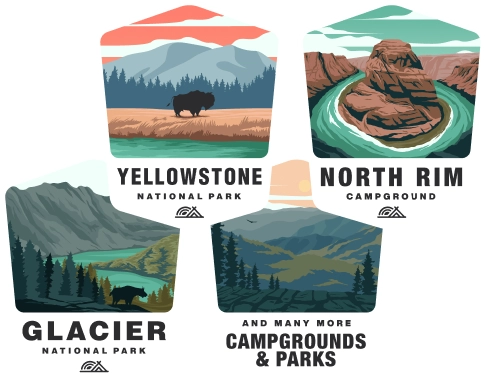Camping at Coral Pink Sand Dunes State Park
Location and Description
Coral Pink Sand Dunes State Park is located in southwestern Utah, United States. It is situated between Mount Carmel Junction and Kanab, just outside the boundary of the Grand Staircase-Escalante National Monument. The park is renowned for its brilliant orange-pink dunes, which are formed from the erosion of pink-hued Navajo sandstone surrounding the area. The shifting dunes here are estimated to be between 10,000 to 15,000 years old.
Activities and Recreation
Dune Activities: The park's primary attraction is its 1,200-acre field of sand dunes that visitors can explore. The dunes are a popular spot for off-highway vehicle (OHV) riding, including ATVs and dune buggies. Hiking and sandboarding are also favorite activities in this unique landscape. Visitors should note that a section of the dunes is set aside for non-motorized use.
Photography: With its striking landscapes, the park is also a magnet for photographers, especially during sunrise and sunset when the sandstone appears to glow.
Wildlife Watching: Keep an eye out for the Coral Pink tiger beetle and other endemic species, as well as desert fauna such as foxes, jackrabbits, and kangaroo rats.
Facilities and Amenities
Camping: The park offers a campground that includes 22 sites with restrooms, hot showers, and RV hookups. There are also modern facilities including a campground and day-use area with a boardwalk to protect and observe the delicate dunes.
Visitor Center: A visitor center provides exhibits on the geology, wildlife, and history of the area as well as information on dunes preservation.
Rules and Regulations
OHV Use: OHV riders are required to follow specific rules to ensure the safety of all visitors and to protect the delicate desert environment. OHVs must be registered, and riders must stick to designated areas. Additionally, all vehicles are required to have a whip flag for visibility on the dunes.
Camping Regulations: To maintain the serene environment, there are quiet hours, a limit on the number of vehicles and people per site, and rules against collecting wood or driving stakes into the ground outside of designated areas.
Conservation Efforts: Parts of the dunes are closed to motorized vehicles to protect the Coral Pink tiger beetle and other sensitive species. Visitors are encouraged to tread lightly and leave no trace.
Seasonal Access and Climate
Climate: The climate in the area consists of warm, dry summers and cool, potentially freezing winters. As a desert, the park receives minimal precipitation, but the weather can change rapidly.
Best Time to Visit: Late spring and early fall are typically considered the best times to visit due to the moderate temperatures. Summer can be very hot, making daytime activities more challenging.
Reservation and Fees
Fees: There are day-use fees for entering the park as well as additional fees for camping. Visitors can check the park's official website for the latest fee schedule.
Reservations: Campsites in the park can be reserved online or by telephone and are highly recommended if planning an overnight stay, especially during the peak visiting months.
Accessibility: While natural sand dune terrain poses challenges, the boardwalk and visitor center are designed to be accessible to those with disabilities.
Before visiting Coral Pink Sand Dunes State Park, it’s advisable to check the current conditions and guidelines as they may change due to weather, conservation initiatives, or other factors.
